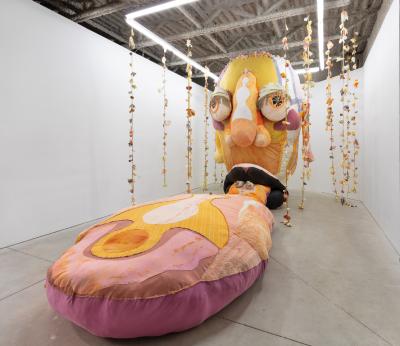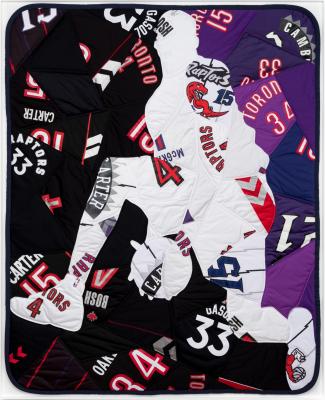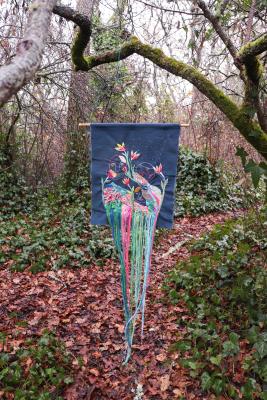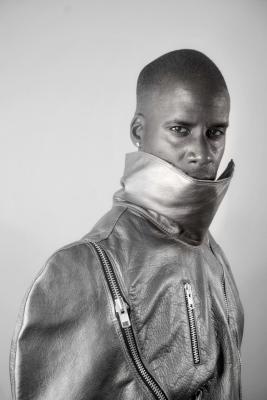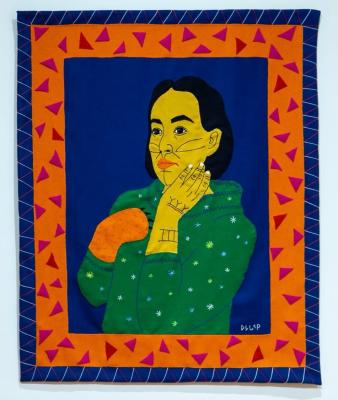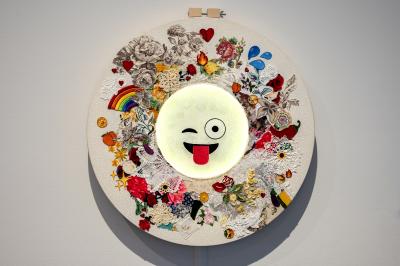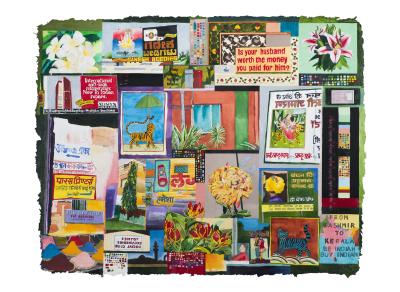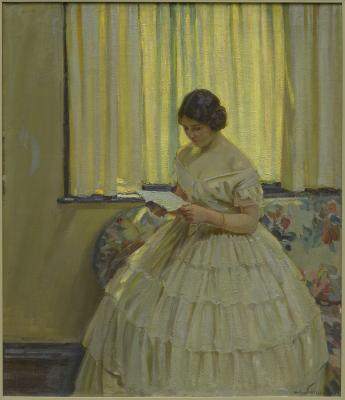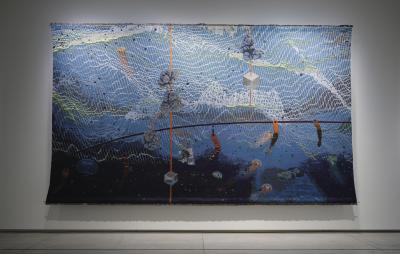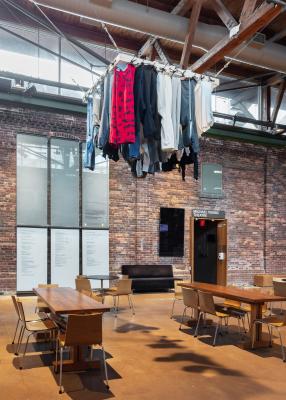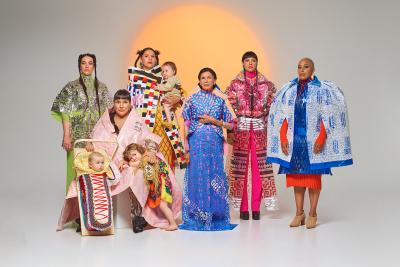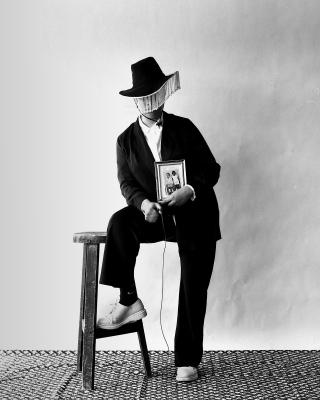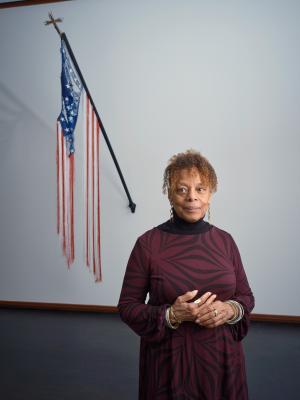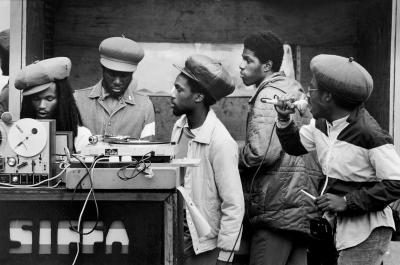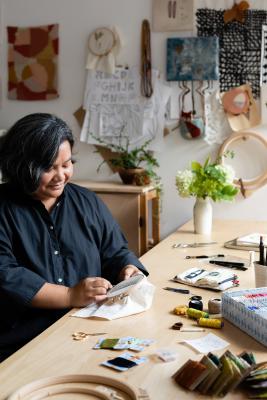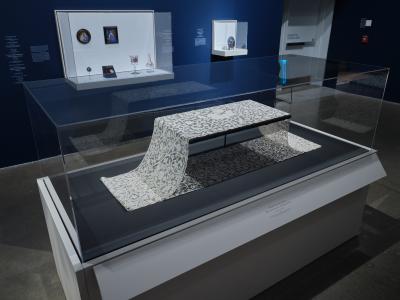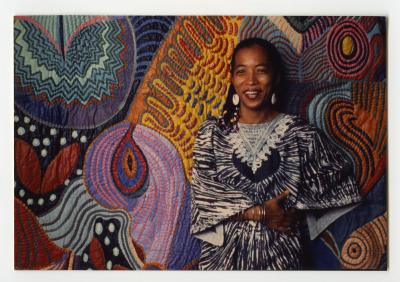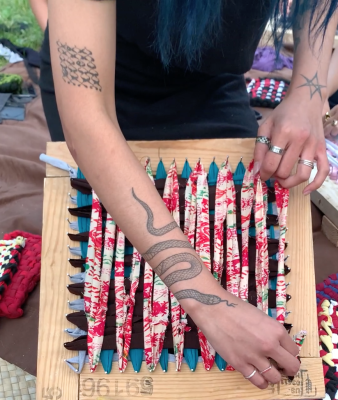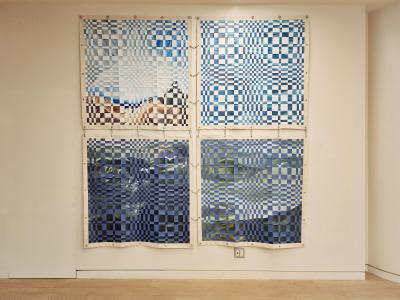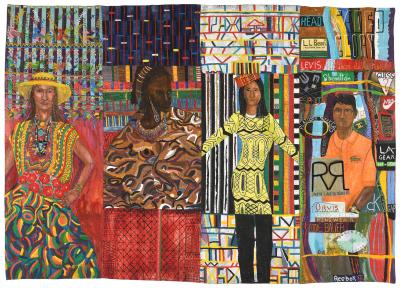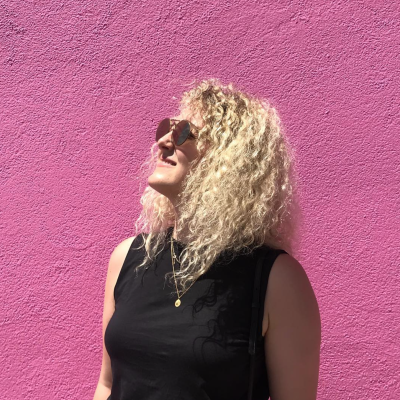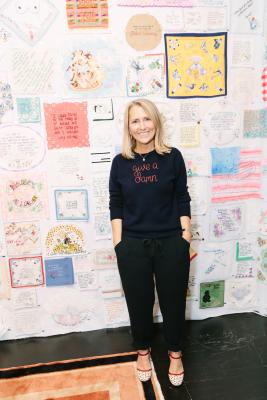Ilocano Abel with Karl Mata Hipol
The AGO X RBC Artist-in-Residence discusses his research project and Maker Fridays sessions
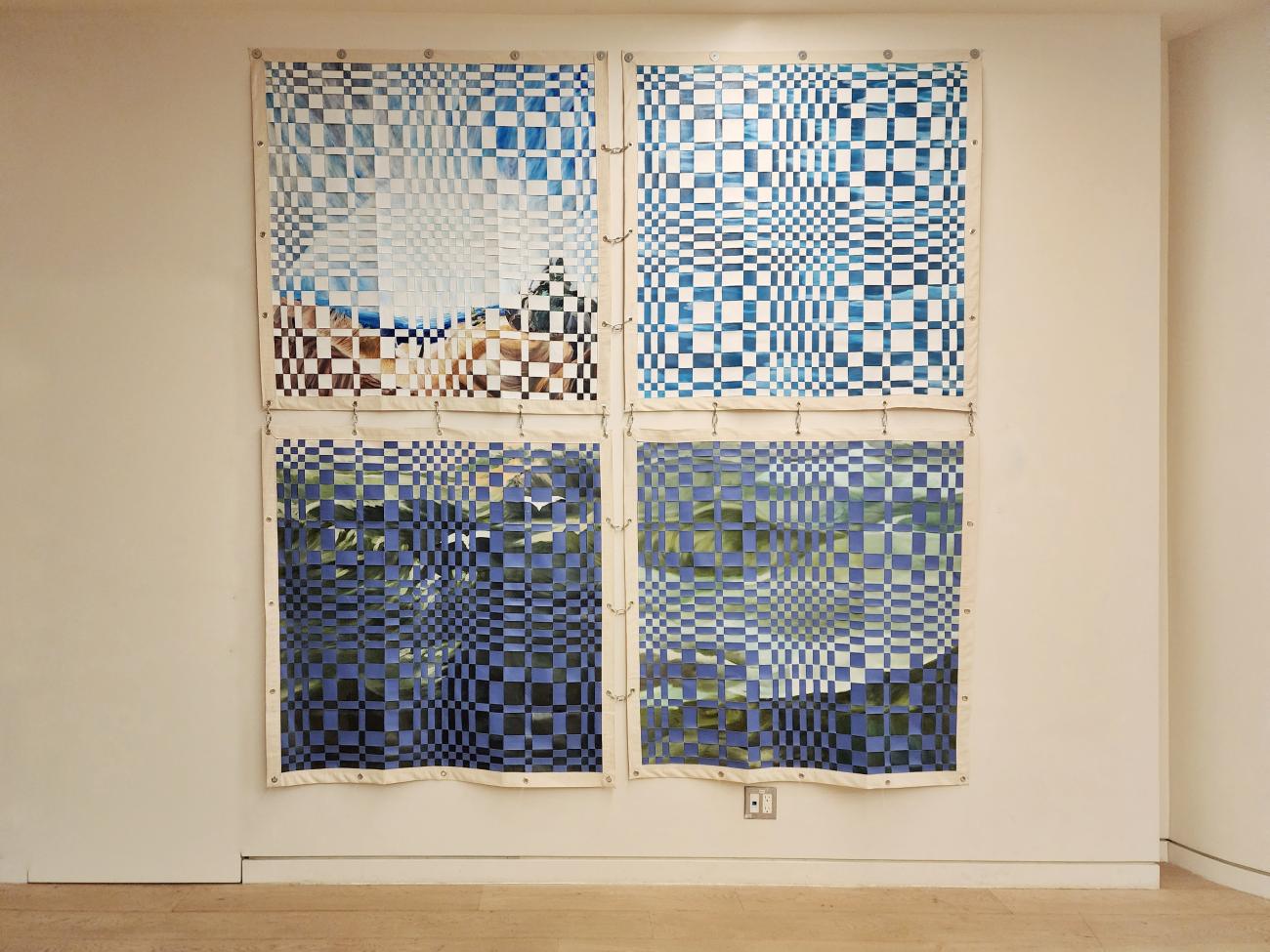
Image courtesy of Karl Mata Hipol
Karl Mata Hipol is driven to explore the complexities of Filipino-Canadian history. As the current AGO x RBC Artist-in-Residence, his residency research project aims to unravel the often-overlooked story of Filipino migration to Canada, while challenging established stereotypes and creating connections through visual storytelling. His investigation into Benson Flores, the first-ever documented Filipino to immigrate to Canada in 1861, sparked Hipol’s idea for a series of four works he has since completed during his time at the AGO.
Titled Maglayag (meaning ‘sail on’), this series consists of mixed media woven paintings that incorporate a whirlpool pattern onto reimagined iconic Canadian paintings, using the traditional Filipino weaving technique Ilocano Abel.
As part of his residency, Hipol welcomes AGO visitors to participate in a free Maker Fridays session on November 22. During this session, Hipol will introduce the tradition of Ilocano Abel while encouraging participants to incorporate other patterns, colours, and textures into their designs to tell their stories and create unique pieces. Participants will leave with a patch-like card that fits into a larger tapestry.
Karl Mata Hipol is a Filipino Canadian multidisciplinary artist and curator from the unceded territories of the Squamish and Tsleil-Waututh Nations. He holds a BFA in Visual Arts from Emily Carr University of Art + Design (2022). He shared with us how he began exploring Ilocano Abel, his AGO X RBC residency project, and what he anticipates from his upcoming Maker Fridays session.
Foyer: Can you walk us through your thought process when ideating your AGO X RBC residency project? What were you researching/thinking about, and how did you form this work as a response?
Hipol: The AGO X RBC residency came at an ideal time to align with my research on themes of movement and migration. My project investigates the journey of Filipinos to Canada, drawing on corroborative evidence from the AGO’s collection and library archives, including the rediscovery of Benson Flores, the first documented Filipino settler in Snug Cove, BC, in 1861. Central to this exploration is the Ilocano Abel weaving tradition, which serves as a rich cultural artifact for storytelling and symbolism. The project aims to address Filipino visibility within Canadian spaces by embedding historical and archival narratives into contemporary forms. By integrating traditional weaving with historical paintings and contemporary artworks, the work bridges the past with the lived experiences of Filipino Canadians on the unceded territories of the Coast Salish peoples.
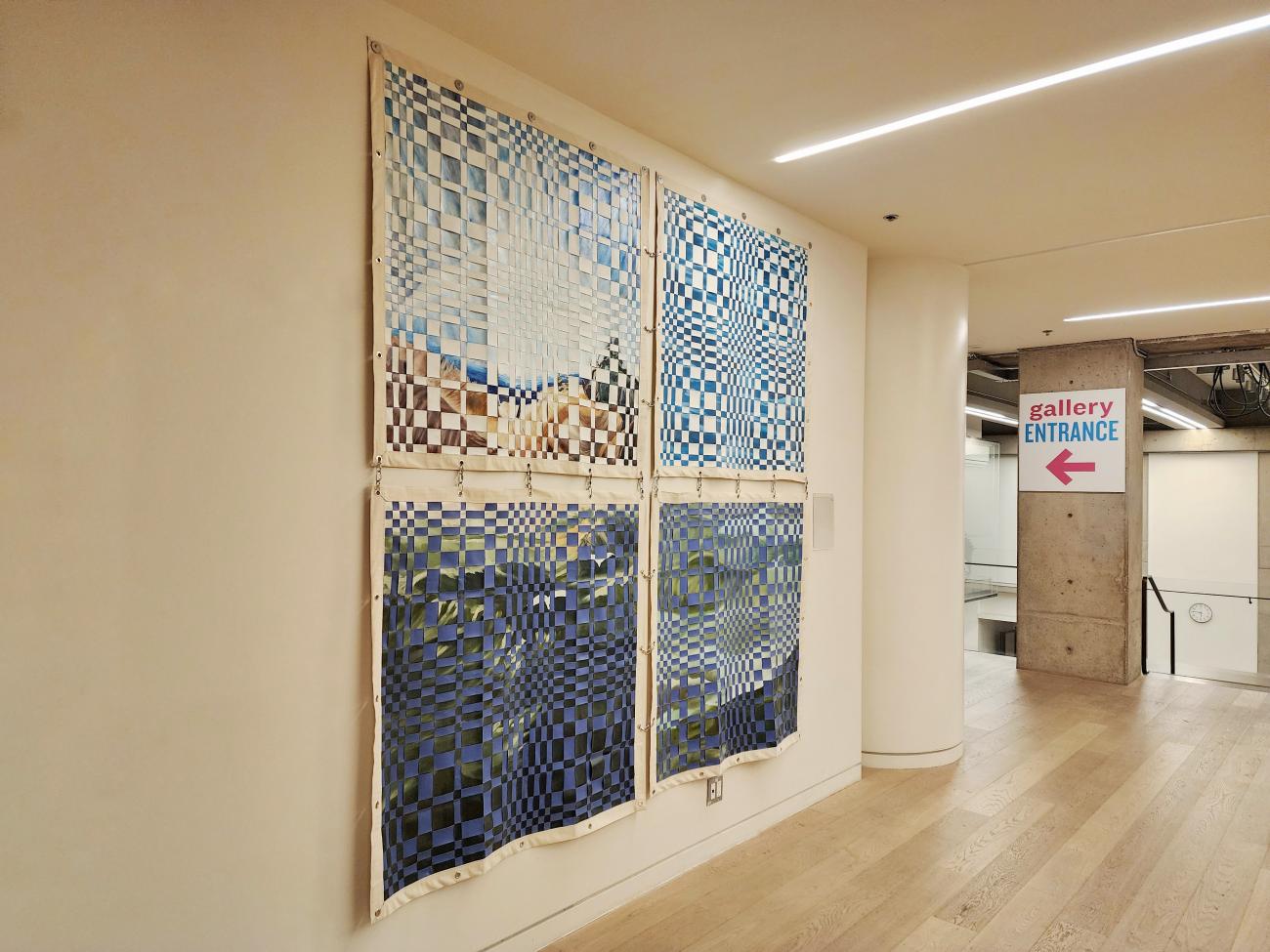
Image courtesy of Karl Mata Hipol
Can you talk about your history with Ilocano Abel? What are your earliest memories of the tradition, and when did you decide to explore it artistically?
My connection to Ilocano Abel began in childhood, admiring the textiles in souvenir shops and museums and observing how elders treated them with reverence, recognizing each piece as a vessel of stories and memories. My earliest impressions were shaped by the intricate textures, patterns, and symbols woven into the fabric, often reflecting everyday life, people, and nature. As I explored Abel artistically, I realized its potential as a medium for addressing Filipino identity in diasporic contexts, using it to visually convey themes of resilience, migration, and adaptation. Incorporating this tradition into my work became a meaningful way to honor my heritage while innovatively narrating the stories of my community’s journey in Canada.
Can you update us on the progress of your AGO X RBC residency project? What have you completed thus far? What will the completed work look like?
During my research, I discovered a lack of archival documentation or Filipino artists within the AGO collection, which prompted me to redirect my project. I have since completed four pieces for my series “Maglayag” ("Sail On," working title), consisting of mixed-media woven paintings that incorporate the *Kusikus* (Whirlpool) pattern onto reimagined iconic Canadian artworks from the 1800s to the present. This process involved rephotographing, recomposing, and repainting selected works on canvas before integrating traditional Ilocano weaving motifs symbolizing protection, disrupting and recontextualizing their narratives. The series explores themes of migration, resilience, and survival, culminating in a large-scale, sail-like tapestry inspired by the Spanish Galleon trade that transported and exploited Filipinos (Malay-Indios) and other marginalized peoples worldwide. By examining parallel colonial histories, the project intertwines Filipino and Canadian cultural identities. My work is on view at the Young Education Commons gallery space until early next year.
You facilitated one AGO Maker Fridays event with visitors November 15, and you have one more upcoming on November22. Can you describe what you invited visitors to create, and share some of your experience leading the session?
During the Maker Fridays event on November 15, I invited visitors to create small paper weavings, which were later mounted onto blank greeting cards. This workshop served as an extension of my residency project, introducing participants to weaving techniques through a zine-style instructional guides I prepared, featuring both plain and twill patterns. With support from the education and programming team, a variety of decorative and colored papers were provided, allowing participants to personalize their designs. It was incredibly rewarding to see visitors connect with the materials–doodle or write messages on their cards–add personal touches and share their stories and cultural connections through their creations. For the upcoming session on November 22, I look forward to building on these interactions and adding an element of fun with karaoke!
Check out Maker Fridays with Karl Mata Hipol on November 22, free with the price of admission to the AGO. Find out more here.

